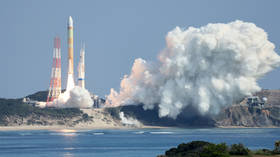NASA warns of possible Valentine’s Day asteroid strike

NASA is tracking a newly discovered asteroid the size of an Olympic swimming pool that could crash into Earth on Valentine’s Day in 23 years’ time, the space agency revealed this week. However, astronomers estimate the risk of collision is minimal.
In a tweet on Wednesday, NASA’s Planetary Defense Coordination Office said that the asteroid – dubbed 2023 DW – “has a very small chance of impacting Earth,” adding that orbit analysts would continue to monitor the object and update their predictions as more information becomes available.
The space agency’s data suggests that the closest the 49-meter space rock will come to Earth is 1.8 million kilometers, which would happen on February 14, 2046.
NASA estimated the odds of impact as 1 in 560, while the European Space Agency put them at 1 in 625. Both space agencies ranked the asteroid 1 out of 10 on the Torino Impact Hazard Scale, a tool to measure the threat from potential impact events.
Level one means that “the chance of collision is extremely unlikely with no cause for public attention or public concern,” according to NASA’s Jet Propulsion Laboratory. Referring to level one, it also states that “new telescopic observations very likely will lead to re-assignment to Level 0,” meaning that the likelihood of a collision with the space object is effectively zero.
However, even a level one threat is extremely unusual as all other listed asteroids have zero ratings.
NASA’s discovery comes after it successfully changed the trajectory of an asteroid in October last year by intentionally crashing a rocket into it. The mission, dubbed Double Asteroid Redirection Test (DART), was hailed as a major breakthrough for planetary defense.













